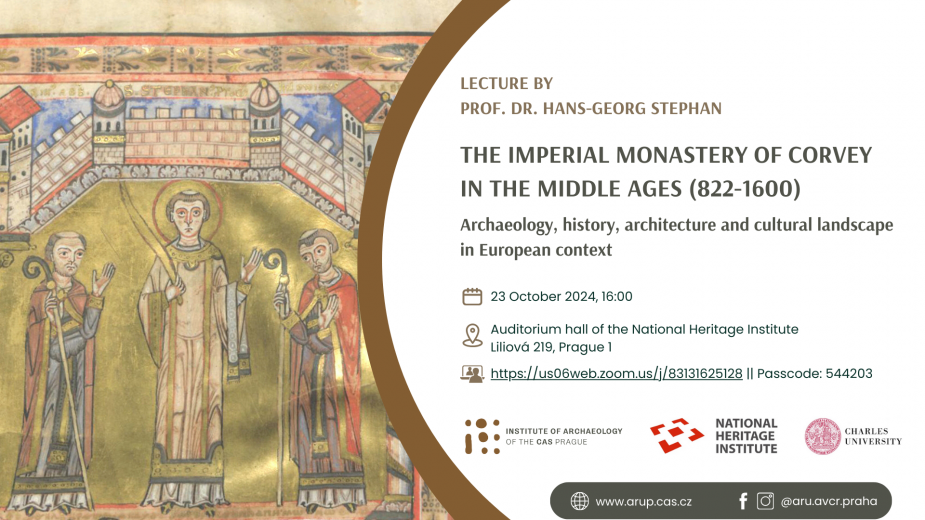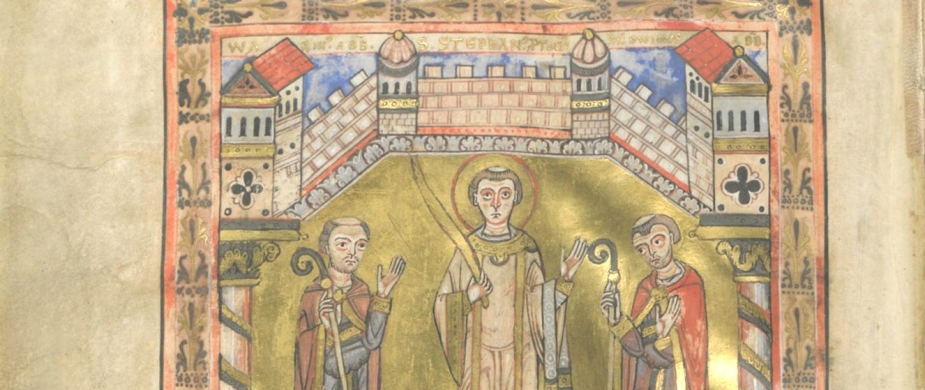List of events
Lecture | The Imperial Monastery of Corvey in the Middle Ages
The Imperial Monastery of Corvey in the Middle Ages (822-1600). Archaeology, history, architecture and cultural landscape in European context
Prof. dr. Hans-Georg Stephan
23 October 2024, 16:00 CEST
The lecture takes place onsite in the Auditorium hall of the National Heritage Institute (Liliová 219, Praha 1), and online via Zoom (https://us06web.zoom.us/j/83131625128 | Passcode: 544203). For attendance in person, please send a request via email to hasil@arup.cas.cz. There are no restrictions for online participation.
Abstrakt:
The lecture sheds light on the significance and eventful history of the Benedictine monastery of Corvey from its foundation in 815/822 to the 16th century. The focus is on interdisciplinary archaeological research. By integrating scientific research methods, the development of the cultural landscape, economic history and architectural history are highlighted in comparison with the written record and more general historical developments in Europe. The monks were important mediators of the knowledge and culture of the Frankish Empire in Saxony. Networking with nobility and royalty throughout Europe, the abbey played an important role in the transition from Carolingian to Ottonian rule. Until around 1160/1230, the imperial abbey was a high-ranking central location in Saxony, also for the royal family. It played an important role in the organisation of the church, the deepening of the Christian faith and the mission to the Vikings and Western Slavs, probably also in Bohemia. The monastery was also an economic centre, with market and minting rights from 833. Full urban structures developed around 1250, when the political and economic collapse occurred. The late Middle Ages was a period of largely crisis-ridden development, which was only overcome with great difficulty in the 16th century. Corvey is in many ways a reflection of the turbulent history of the heart of Central Europe.

-
Download invitation in pdf (1.15 MB)Download

